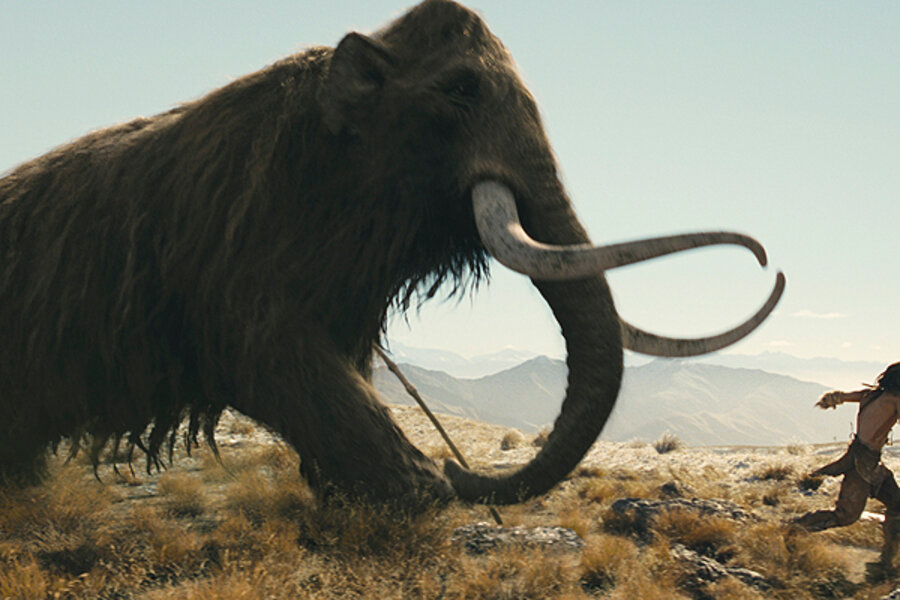Why there are no more woolly mammoths
Loading...
Last week, a very low-quality video of a 'woolly mammoth' crossing a river in Russia went viral, only to be debunked as a hoax within a few days.
According to the Sun newspaper, a British tabloid owned by Rupert Murdoch's News Corporation, the video was taken by a government engineer. It showed a hazy image of a brownish bear-sized four-legged creature ambling through the water.
A few days later, the truth emerged. Ludovic Petho, a writer and videographer who was hiking in Siberia's Sayan Mountains revealed his footage of the Kitoy River. Although much less blurry, it was the same footage that appeared in the Sun, but with one big difference: no mammoth.
Outside of a handful of hard-core cryptozoophiles, Petho's revelation surprised nobody. Woolly mammoths are widely believed to have gone extinct on the Russian mainland thousands of years ago.
But still, the video captured the popular imagination, lingering on the top of news aggregators for several days, even after having been debunked. What exactly were these huge, hairy elephantine beasts that roamed Europe, Asia, and North America, co-existing with modern humans for most of our history. And why, exactly, did they go extinct?
The woolly mammoth belongs to the Elephantidae family, a taxonomic rank that includes the two species of modern-day elephants, and it lived during the Pleistocene period from about 5 million years ago, into the Holocene period, some 4,500 years ago. Unlike the American mastodon, the woolly mammoth evolved into multiple species. Its precise taxonomy is still subject to debate, but the earliest accounts of its presence are found about 4 million years ago in Africa, before woolly mammoths started crossing into Europe.
The word mammoth comes from the Russian mamont, a word used by the currently endangered Mansi tribe, which lives in the Russian oil-producing region of Tyumen Oblast.
The discovery of numerous carcasses, body parts and cave paintings has given us a clear picture of what these animals looked like. Unlike most other pre-historic vertebrates, woolly mammoth fossils are easy to find, thanks to their enormous size and the cold climates in which they dwelled.
Wooly mammoths are closely related to present-day Asian and African elephants. They had a towering physical presence, standing at nine to eleven feet. It is estimated that they weighted between four and six tons.
The gigantic beast had a total of 24 teeth for both its upper and lower jaws and had extremely curved tusks, sometimes longer than 13 feet.
Although it is believed that the last woolly mammoths vanished from Europe and Siberia about 12,000 years ago, some new discoveries reveal that a small group survived on St. Paul Island, Alaska until 3,750 B.C. Frozen, mummified mammoths were unearthed at the remote Russian Wrangel Island, where they existed until 1,650 B.C.
Why they disappeared is a matter of contention. Research published in Nature, an international weekly science journal, concluded that “a combination of climatic and anthropogenic [that is, human-caused] resulted to the mammoths’ mass extinction."
That's probably true, as far as it goes, but it doesn't say exactly what ultimately did the beasts in. One theory holds that humans hunted them to extinction. According to Paul Martin’s 1967 “Blitzkreig” theory, the retreat of the continental glaciers allowed humans to travel farther north and wipe out the mammoths. Proponents of this theory point to the numerous unearthed mass kill sites and the signs of “spear points among the bones of mammoths,” according to Drexel’s University Academy of Natural Sciences.
But a study of woolly mammoth DNA has found that the animals still existed for thousands of years after humans moved into their territory. A 2009 report in the Proceedings of the National Academy of Sciences concluded that hunting did have an impact but “did not deliver the deathblow” to the species.
Other scientists look to the sky for an explanation. Pointing to fragments of glassy carbon, microscopic diamonds, and enriched iridium at several sites in the United States and Canada, all buried beneath a layer of soot, decayed plants, and other debris, they speculate that, about 13,000 years ago, a comet exploded over Canada, unleashing a shock wave with a force equivalent to millions of nuclear weapons.
“This event was large enough to directly kill most everything instantly. Those that survived would have found their food sources devastated, their water polluted, all kinds of things that would have made it difficult to go on much longer,” Richard B. Firestone, a nuclear chemist at the Lawrence Berkely National Laboratory, told the Washington Post. This event is thought to have contributed to the extinction of the saber-toothed cat, the American camel, and the giant ground sloth.
Is it possible that the woolly mammoth could someday roam the earth again? Evolutionary geneticists could someday clone the woolly mammoth by inserting the nuclei of the long-dead beast into the egg of an Asian elephant. Ethicists may debate the morality of resurrecting extinct species, but nobody would deny that it would make for a very interesting trip to the zoo.





